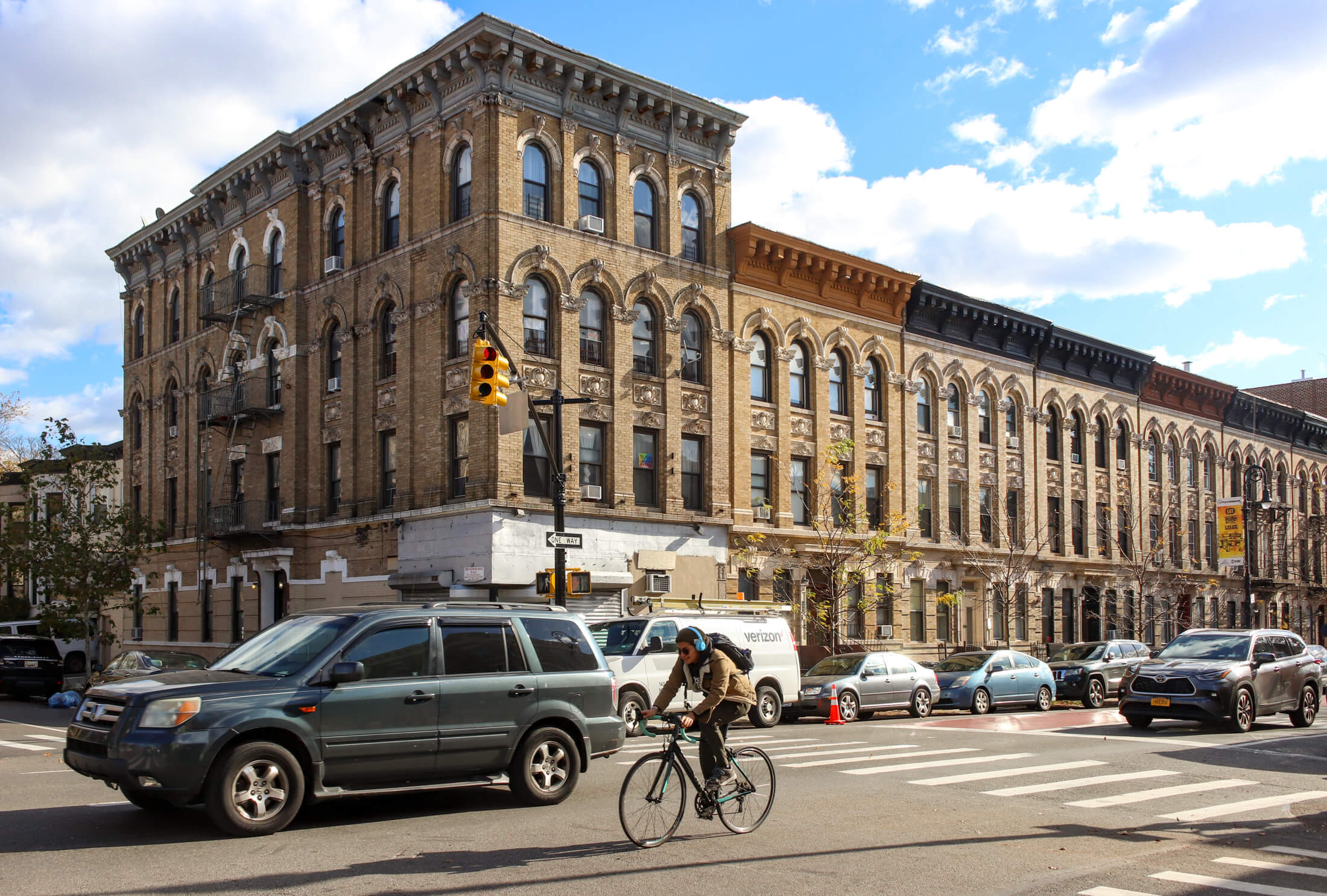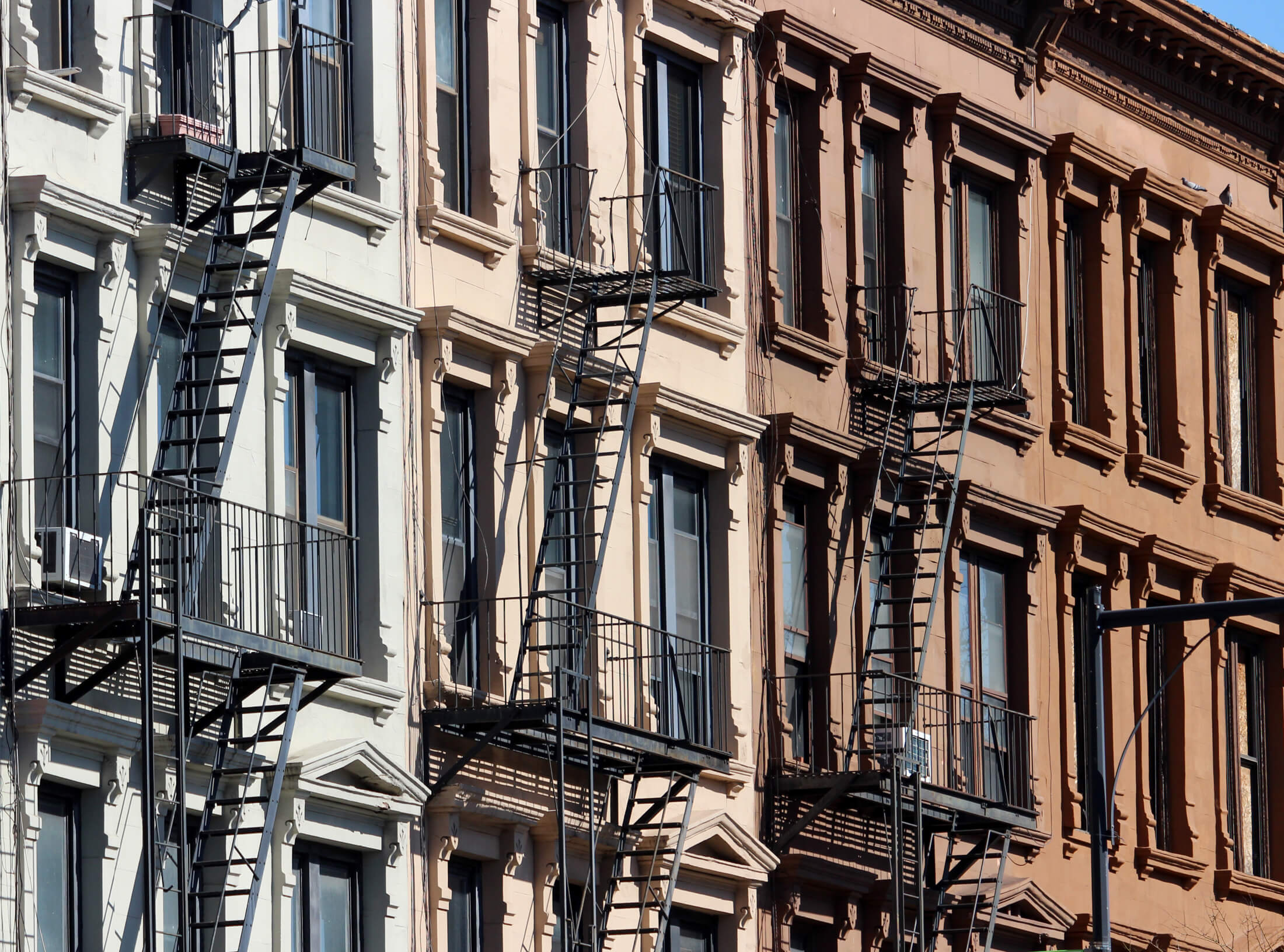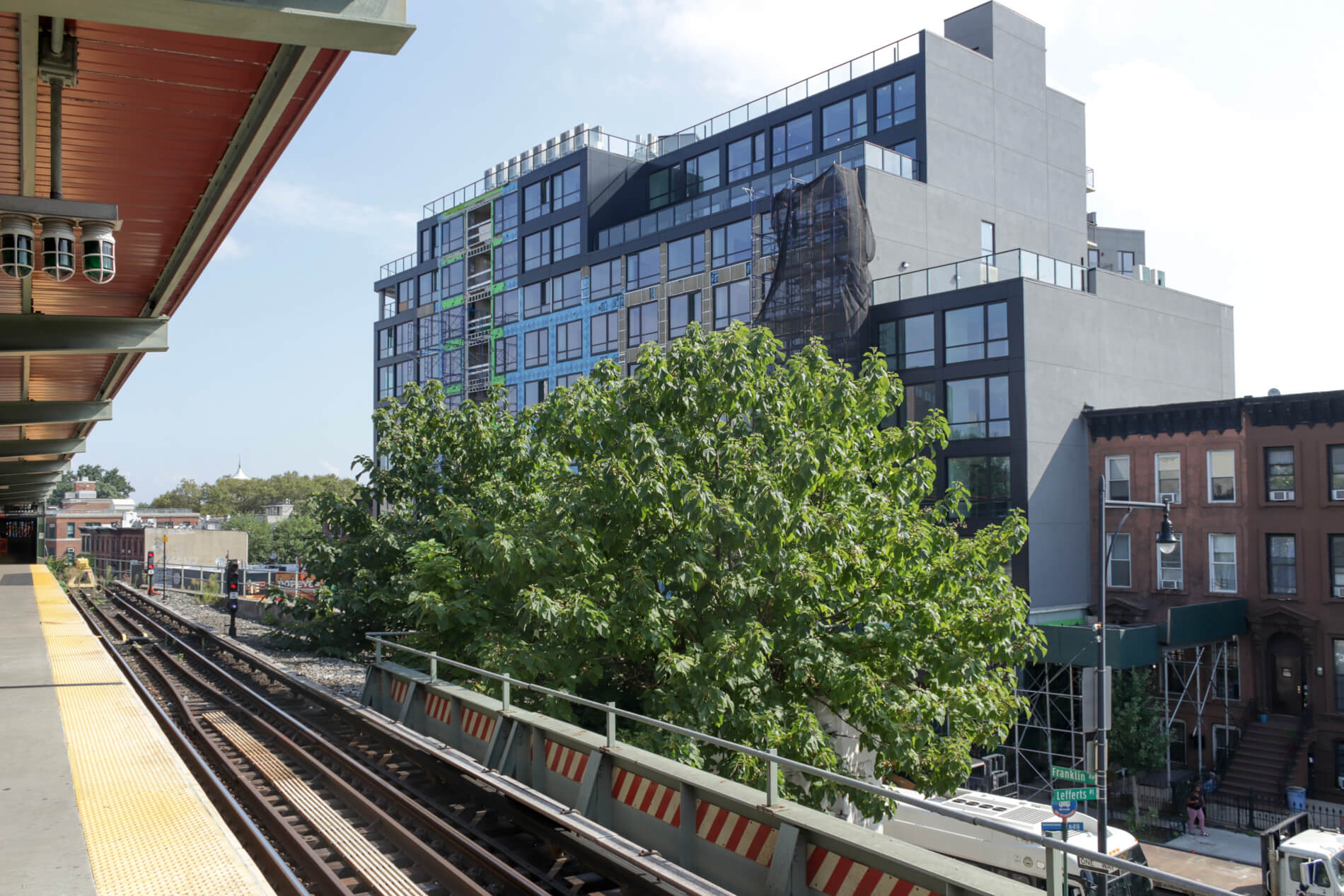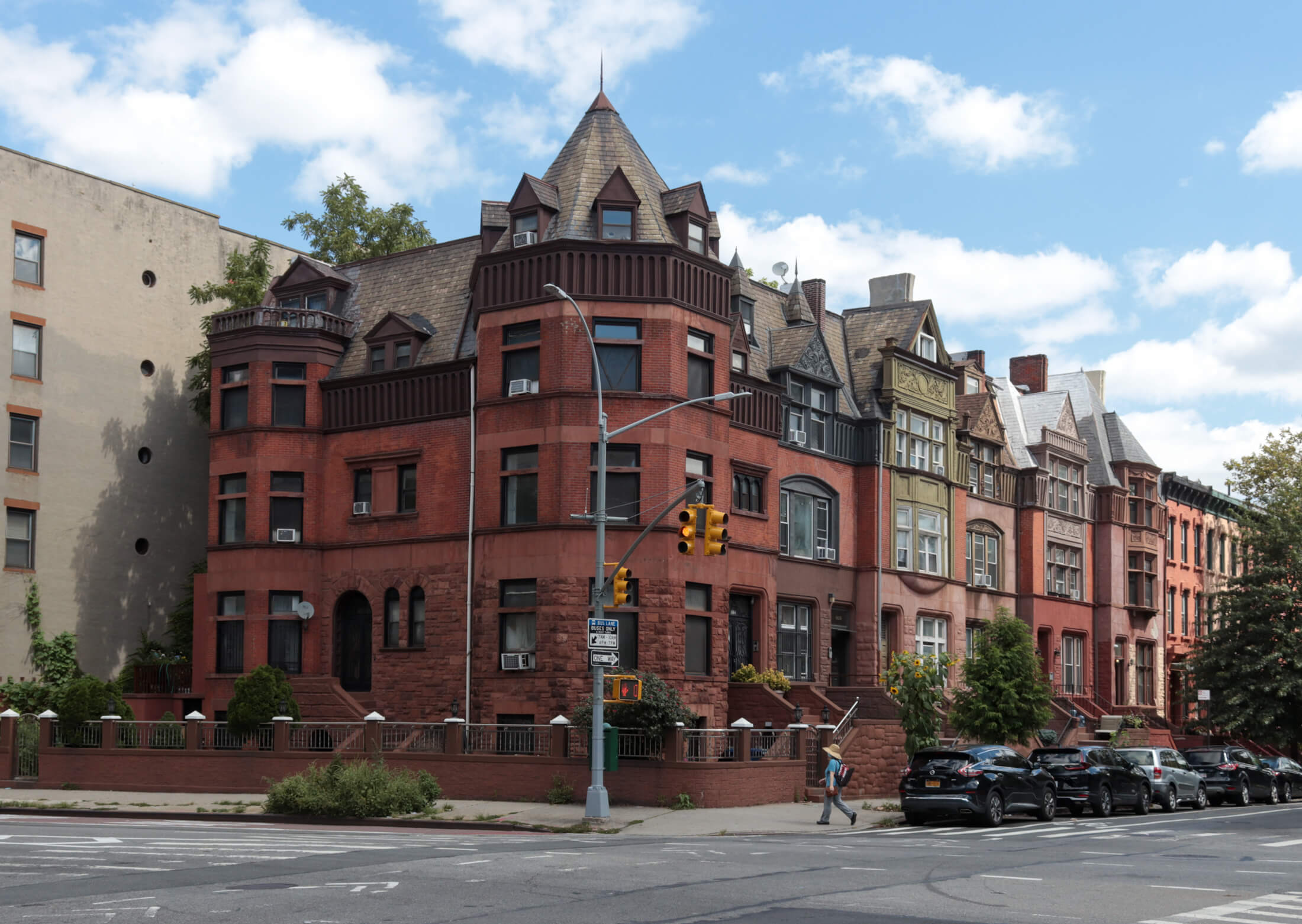What Is Affordable Housing?
In New York City, there are a myriad of programs and types of affordable housing.

Old and new apartment buildings in Prospect Heights. Photo by Susan De Vries
Affordable housing is often defined as housing that costs 30 percent or less of a household’s income. In New York City today, there are many programs and types of affordable housing. It may be naturally occurring, fully subsidized and nonprofit, or a private for-profit enterprise.
Naturally occurring affordable housing is below market-rate housing that is not part of any official program. Typically in older buildings (and often purchased decades ago at lower prices), the housing may be substandard or the landlord may opt to rent it for less than going rates for any number of reasons, such as wanting to retain good tenants.
All the other types of affordable housing in New York City are part of programs and are regulated in some way.
In New York City, there are an almost limitless number of different types of affordable housing. Some of the best known ones are: Rent control, rent stabilization, NYCHA housing, 421-a, Mandatory Inclusionary Housing, Mitchell-Lama, HDFC, and Habitat for Humanity. There are many more.
But a funny thing about NYC affordable housing — the official, regulated kind — is that it’s not always below market rate. In fact, if it’s new, private, for-profit construction, it’s usually not below market rate. How affordable a home is depends on the program under which it is created and the degree to which it is subsidized.

Even with programs such as the state’s now-expired 421-a tax break and the city’s Mandatory Inclusionary Housing, the amount of genuinely affordable housing created through private, for-profit development is negligible. In its most recent iteration, passed by the New York State legislature, the controversial 421-a program required developers to set aside 20 percent of units for households earning 130 percent of Area Media Income, or $128,570 for one person.
That’s well over the $43,952 median income for an individual in New York City, according to 2021 census figures.
Such apartments are not affordable to low-income households, even though the city, confusingly, calls any income-restricted and rent-stabilized homes “affordable housing.” As well, the monthly rent for such units is often equal to or even more expensive than market-rate apartments elsewhere in the same neighborhood — even sometimes in the same building. However, 421-a “affordable” apartments are income restricted and rent stabilized.
Developers of new buildings under 421-a as well as other programs typically set the rents (or sale prices), as long as they fall within the bounds of the program’s requirements.

Although the 421-a tax break has produced little to no genuinely affordable housing, it has arguably helped spur construction of market-rate apartments in Brooklyn. In the past, construction has slowed when the tax break has lapsed, then picked up again when it has been renewed.
Developers such as David Kramer of Hudson Companies have said in the past that constructing rental buildings in Brooklyn does not pencil out without the 421-a tax break.
“We think stopping 421-a will halt supply like crazy,” Slate Property Group principal David Schwartz said at the Brooklyn Real Estate Roundtable in 2015. And now that the tax break has expired again, some developers in recently upzoned Gowanus are saying they cannot afford to build rental apartments there after all.

Mandatory Inclusionary Housing is required in new construction that takes advantage of a rezoning. While Mandatory Inclusionary Housing has lower income bands than 421-a, including a small number of units aimed at those earning 40 percent of the Area Median Income, developers can’t afford to create the amount of genuinely affordable housing New York City needs in private, for-profit developments.
To meet the demand for affordable housing for low-income households, new units must be fully subsidized, developers and housing advocates say.
“The highest vacancies are in areas of new construction,” Tom Angotti, a professor of urban policy and planning at Hunter College and CUNY, told Brownstoner in May. “We need subsidized housing, we need truly affordable housing, and it’s going to take public subsidies.”
Every year, New York City produces a small amount of genuinely affordable housing under a wide variety of programs such as the city’s Extremely Low & Low-Income Affordability (ELLA) program. What is distinctive about the housing is the complexes are 100 percent affordable and they are available to very low income households and even no-income households. The latter can include seniors and those who were formerly homeless. At the upper end, eligibility might allow a smaller number of households making as much as 60 or 80 percent of Area Median Income.
Private and publicly funded nonprofits are also involved in creating genuinely affordable housing in New York City, sometimes in partnership with the city, New York State, or on their own. Very often new genuinely affordable housing is built on government or nonprofit-owned land, which helps lower costs.

Overlooking the elevated train tracks in Ocean Hill, a wedge-shaped building rising at 1510 Broadway is being developed by East Brooklyn Housing Development Corporation and the Local Development Corporation of East New York, with input from Community Board 16. The fully affordable eight-story, 108-unit building will resemble a modern row of townhouses in fun colors including citron, turquoise, and purple and will be occupied by formerly homeless as well as households earning 40 to 80 percent of Area Median Income. The block was an empty lot going back many years, and is being developed under the ELLA program.
Bushwick senior housing still in the planning stages from community organization St. Nicks Alliance will be funded by ELLA, Section 8, and the Senior Affordable Rental Apartments (SARA) program. Slated to replace a bank at 95 Bushwick Avenue, the new development will be affordable to seniors with incomes ranging from zero to 60 percent of Area Median Income.
A recent development of 17 townhouses in Brownsville, East New York, and Ocean Hill known as the Mother Gaston Hinsdale Homes was initiated by the city with the goal of building workforce housing for first-time home buyers. The houses were constructed by a developer who responded to a request for proposals, and funded under the Neighborhood Infill Housing Opportunities Program of the city’s Housing Preservation and Development agency.
While the vast majority of affordable units are rental apartments, some other noteworthy examples of owned affordable townhouses in Brooklyn include Nehemiah Houses by East Brooklyn Congregations and modern Queen Anne-style townhouses on Noll Street in Bushwick built by the Ridgewood Bushwick Senior Citizens Council (now RiseBoro Community Partnership).
Other types of genuinely affordable housing can occur when the city gives a private landlord a tax break to keep an older but well maintained building rent stabilized, or when renters take over a building and turn it into an HDFC co-op.
Related Stories
- NYC Has More Housing Than Ever Before Yet It’s Still Not Affordable
- Despite Building Boom, Housing in Brooklyn Is Not Getting More Affordable
- Fix for Brooklyn’s Housing Crisis Could Also Improve Borough’s Architecture
Email tips@brownstoner.com with further comments, questions or tips. Follow Brownstoner on Twitter and Instagram, and like us on Facebook.





What's Your Take? Leave a Comment